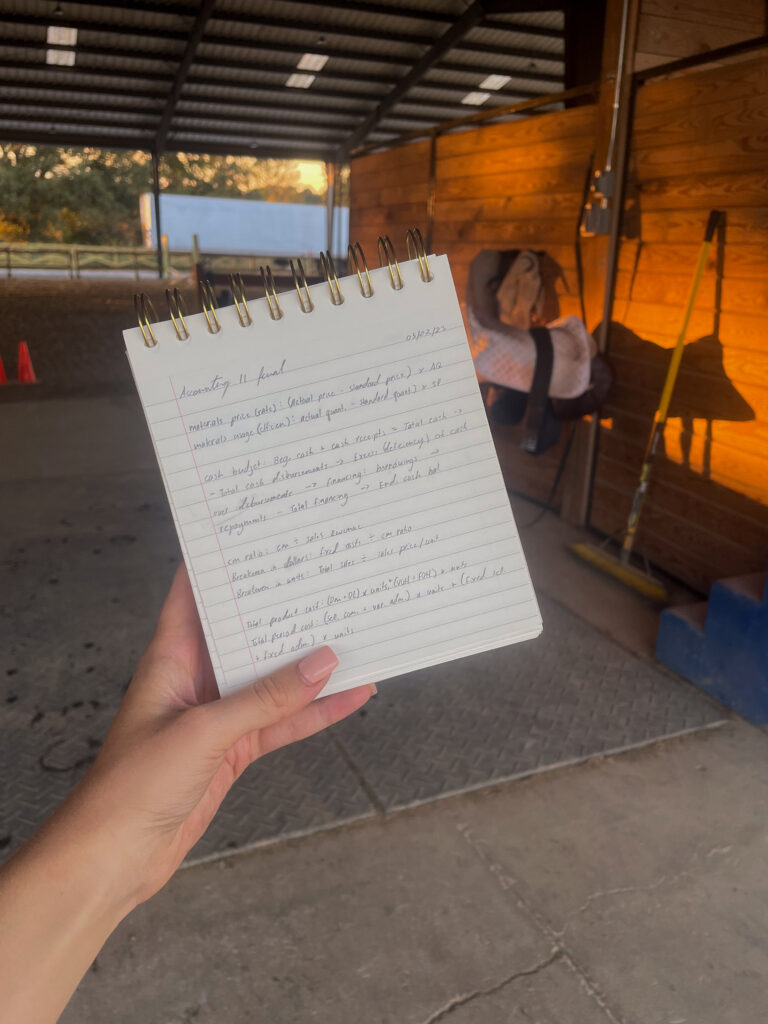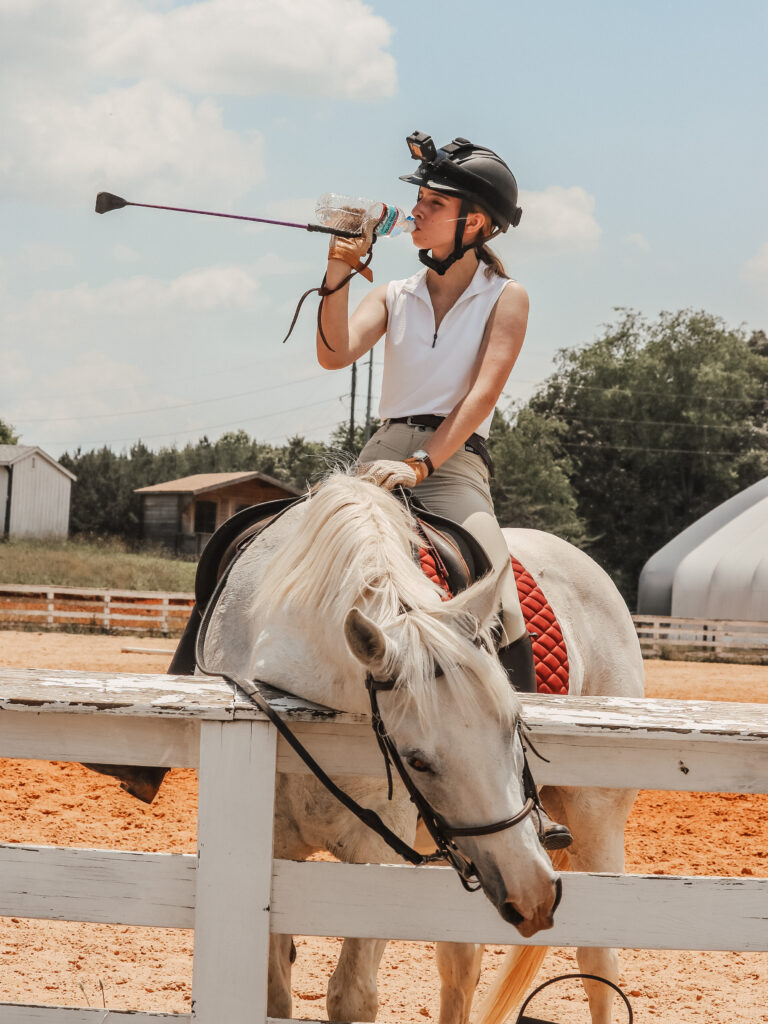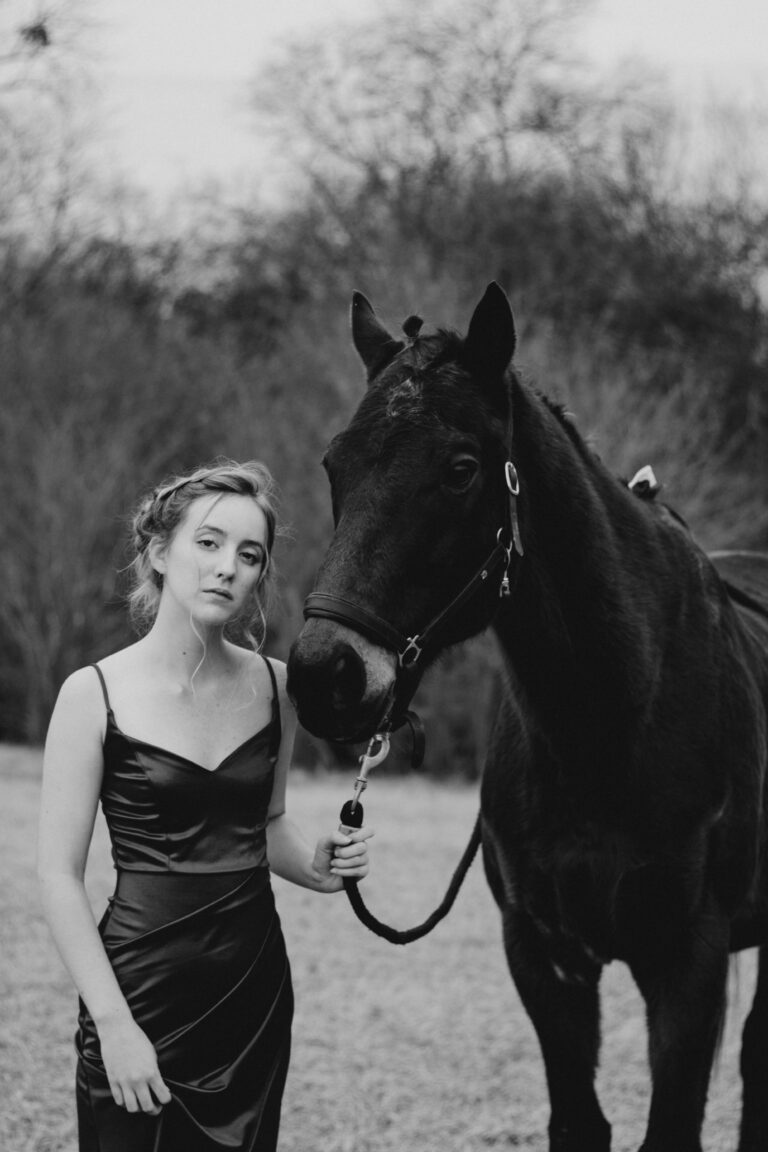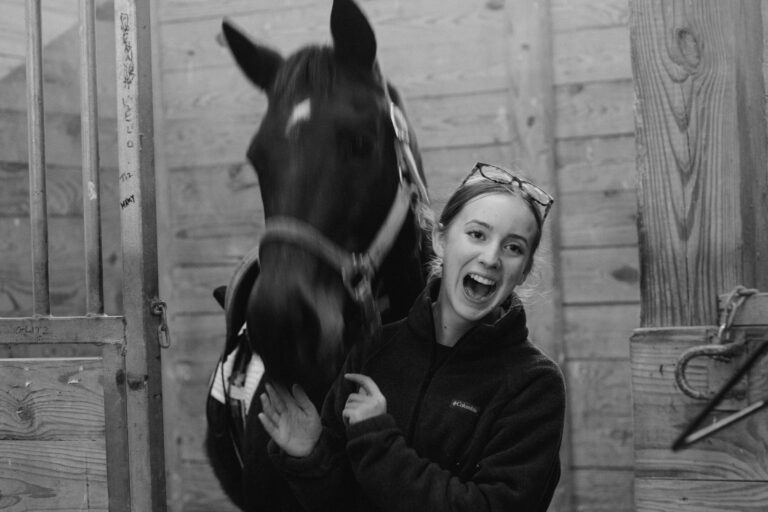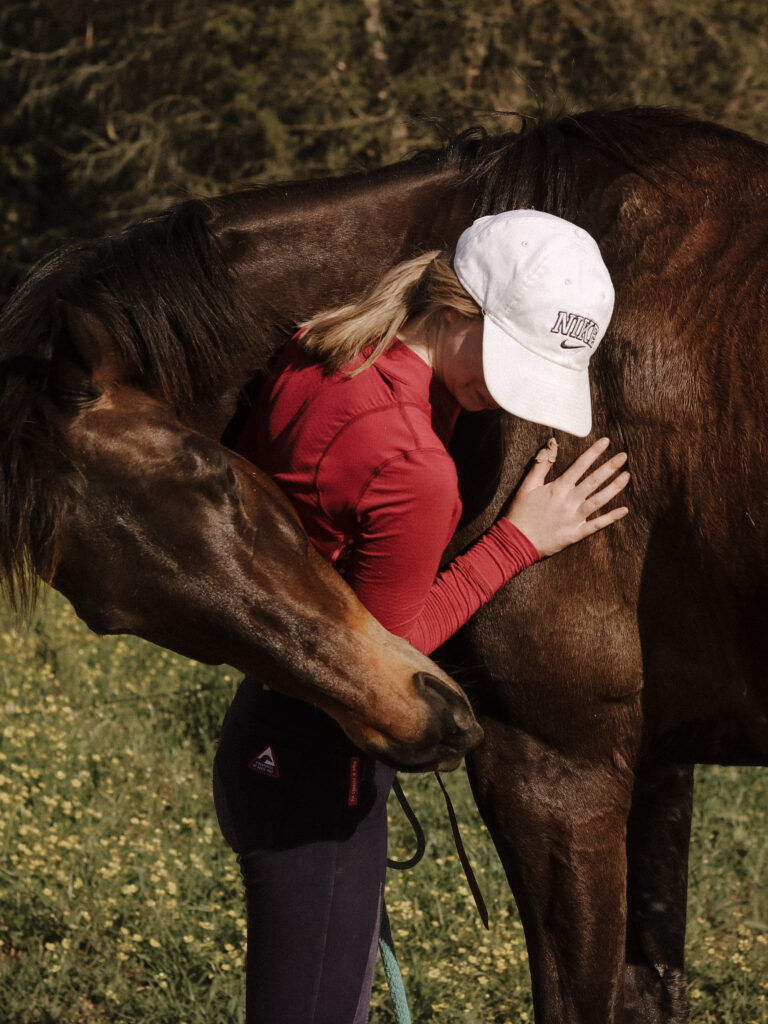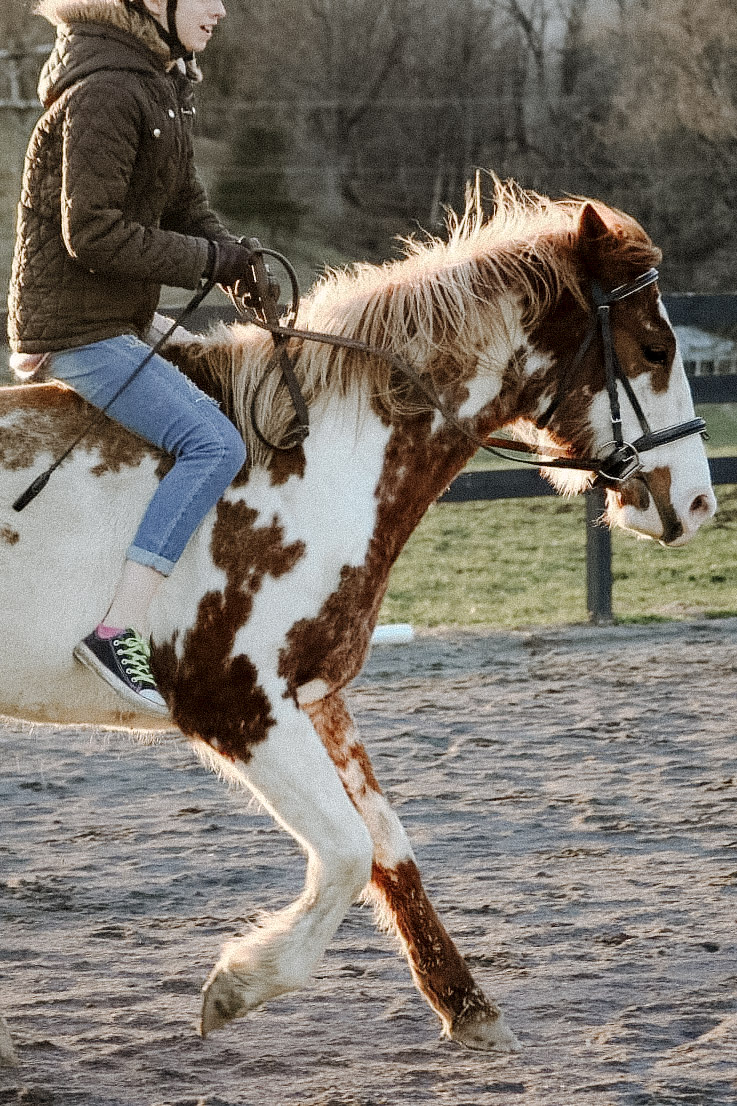Handling a Fresh Horse: The Ultimate Guide
It’s that time of the year again… a single breeze can send your thousand-pound animal 10 feet into the air – spooky season doesn’t JUST mean Halloween after all. Here’s Handling a Fresh Horse: The Ultimate Guide.
Personally, I can’t count how many times my arms have felt like liquid after just walking a fresh horse across the field. But overall, between falling off, getting stepped on, or just plain run over, handling a fresh horse can be challenging and even dangerous if not done properly.
But to lighten the mood before this topic…
Why did the fresh horse break up with its girlfriend?
Because she said he was always too high-strung!
Sorry, I’ll see myself out.
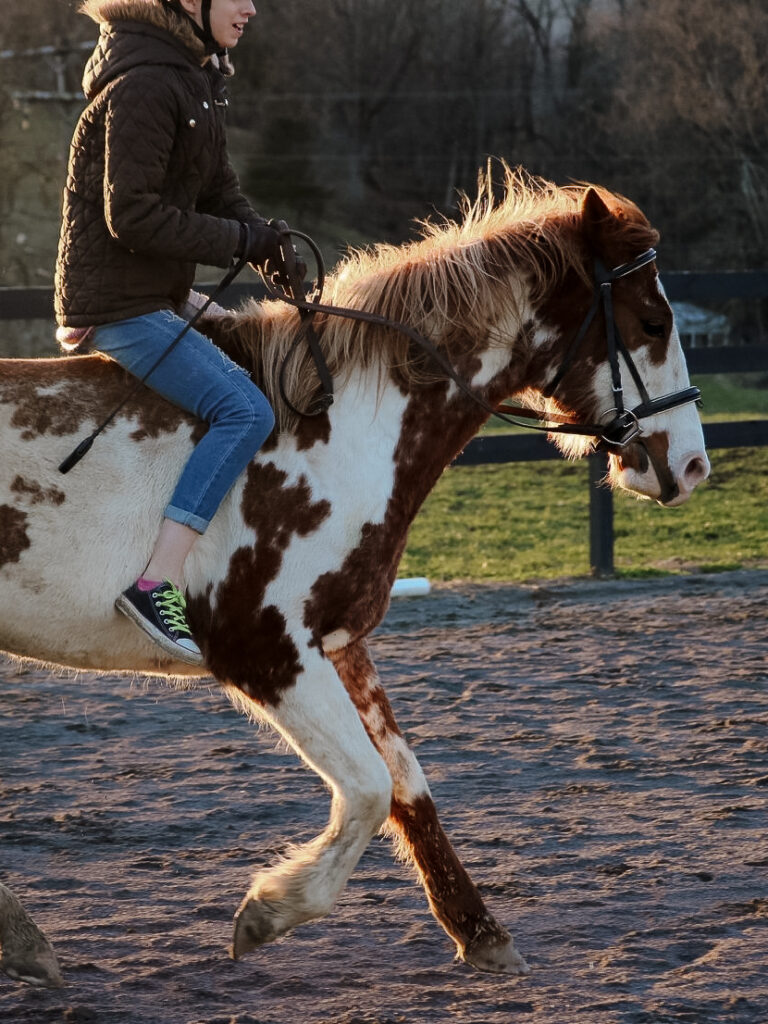
As an equestrian, one of the most exhilarating experiences is riding a fresh horse. However, it can also be intimidating and dangerous, especially if you don’t know how to handle the situation properly. In this post, we’ll discuss what a fresh horse is, why it happens, and how to handle a fresh horse safely and effectively.
What is a fresh horse and why do they become fresh?
A fresh horse is a term used to describe a horse that is full of energy, enthusiasm, and is likely to be a bit unpredictable.
Personally, I find that a change in weather is usually the root cause of my horse, Theo, turning into a kite. And though I do love a good assisted launch across the field here and there, it’s probably not everyone’s cup of tea. Here are some other factors:
Diet: A horse’s diet plays a crucial role in their behavior. Feeding a horse a high-sugar diet or providing too many treats can lead to hyperactivity.
Pain or discomfort: Horses may display fresh behavior if they are experiencing pain or discomfort. This could be due to a physical injury or underlying health issues such as ulcers or dental problems.
Lack of exercise: Horses that are not getting enough exercise may become bored and restless, leading to fresh behavior.
Environmental factors: Horses are sensitive to their surroundings, and changes in their environment can cause fresh behavior. This could include changes in weather, noise levels, or the presence of other animals.
Training: Improper or inadequate training can also cause a horse to become fresh. Horses that aren’t trained to respond to cues properly may become frustrated or anxious, leading once again, to fresh behavior.
Handling on the ground:
It’s important to remember safety first. If you feel like a situation is far beyond your experience, don’t be afraid to speak up!
Use a lunge line instead of a lead rope when you know you’re going to be dealing with a spooky horse on a windy day. That way, you can keep a safe distance – if necessary – while still keeping hold. Make sure you’re also wearing the correct footwear (getting clipped on the ankle by a metal shoe isn’t ideal).
When getting your horse out of its field, greet them and walk them confidently back to the gate like everything is normal… even if you are flying that familiar kite behind you. And try not to ponder on the situation at hand; instead, take deep breaths and hum a song or tell a story to your horse – keeping you both relaxed.
If you’re still feeling like the odds are against you,
try some of these tips as well:
- Give the horse a job: Providing the horse with a task or exercise can help to focus their energy and distract them from their fresh behavior. This could include anything from ground work to more advanced riding tasks, depending on the horse’s level of training and experience.
- Use desensitization exercises: Gradually exposing the horse to different stimuli in a positive and controlled environment can help them become more comfortable and confident in new situations. This can include introducing them to new objects or sounds, or working on specific exercises to help them overcome fears or anxieties.
- Evaluate your own behavior: Sometimes, unintentional cues from the rider can contribute to a horse’s fresh behavior. Take a moment to evaluate your own actions and body language, and adjust as necessary to help calm the horse.
- Take a break if needed: If you’re feeling frustrated or overwhelmed, take a break and step away from the horse for a few minutes. This can help you to regroup and refocus, and prevent the situation from escalating.
- Seek professional help: If you’re consistently struggling to handle your horse’s fresh behavior, it may be time to consult with a professional trainer who can provide personalized guidance and support. They can help you develop a tailored training plan to address your horse’s specific needs and help you both achieve success.
Handling in the saddle:
Once again: safety first. If you know your horse is terribly spooky/reactive on crisp days, stick to the groundwork – it doesn’t make you a bad rider, just a responsible one.
If you have to get on, make sure that you’re wearing a helmet and body armor.
Start with lunging. Do lots of trot/canter transitions and change in directions to get your horse to focus on you. BUT while lunging can be an effective tool for handling a fresh horse, it’s important to remember that it should not be used as a substitute for proper training and exercise. A well-trained horse that is getting enough exercise and mental stimulation is less likely to display that fresh behavior. When you do finally have a relatively sane horse again, go ahead and hop on. Stick to circles for warm-up, still focusing on transitions.
Try these while in the saddle:
- Start with simple exercises: Begin with simple exercises, such as walking or trotting in a straight line, before moving on to more complicated maneuvers. This allows the horse to calm down and focus on you.
- Use half-halts: Half-halts are an essential tool for handling a fresh horse. They help to communicate with the horse and maintain control. A half-halt is a brief squeeze and release of the reins that tells the horse to slow down or prepare for a transition.
- Take breaks: If the horse is particularly fresh, take breaks during the ride to allow the horse to catch their breath and relax.
- And lastly, be prepared to dismount: If the horse becomes too difficult to handle, dismount and try again later. It’s better to be safe than sorry.
Moreover, Remember to never push your sessions on a day like this; otherwise, you’ll both end up frustrated, leaving the arena on a negative note. If your horse gives you a fantastic canter transition, that’d be a good place to call it a day.
Handling while turning out:
Your horse should be worn out now and relaxed; however, on the contrary, they could be extra excited to get back to their friends.
Turn your horse towards the gate so they don’t take off. Then make sure that they’re standing nice for you while you take off their halter. Give them a pat, then make a swift exit before they take off.
I can recall several times where as soon as we’re through the gate, and before I can even blink, my horse is just galloping away. So. If you’re going to trust anyone about making sure your horse is standing nicely, facing you, then it should be me : )
What to do if you feel frustrated when your horse is fresh:
Man, I have shed my fair share of sad, but valid, tears over feelings of frustration. Back when I had my first horse, Legend, he got progressively more buddy-sour; resulting in me even struggling to get him out of the field. And though this isn’t exactly the same as a fresh horse, a lot of the same behavior was exhibited. That sore, noodle arm on the way back, or mental blocks after a nice bolt around the arena. All I’m trying to say here is, I 110% get it.
Feeling frustrated is a common experience when handling a fresh horse, however, it’s important to remember that getting angry or upset can exacerbate the situation. If you’re feeling frustrated, take a break and step away from your horse for a few minutes to regroup and refocus.
It’s also important to evaluate your own behavior and actions. Sometimes, unintentional cues from the rider can contribute to the horse’s fresh behavior. Are you nervous or tense? Are you giving mixed signals? Taking a deep breath and relaxing your body can help to calm your horse.
Finally, if you’re consistently feeling frustrated when handling your horse, it may be time to seek the help of a professional trainer. A trainer can provide guidance and support, helping both you and your horse to become more confident and successful in your training. Remember, riding a fresh horse can be a rewarding experience, but it requires patience, persistence, and a positive attitude.
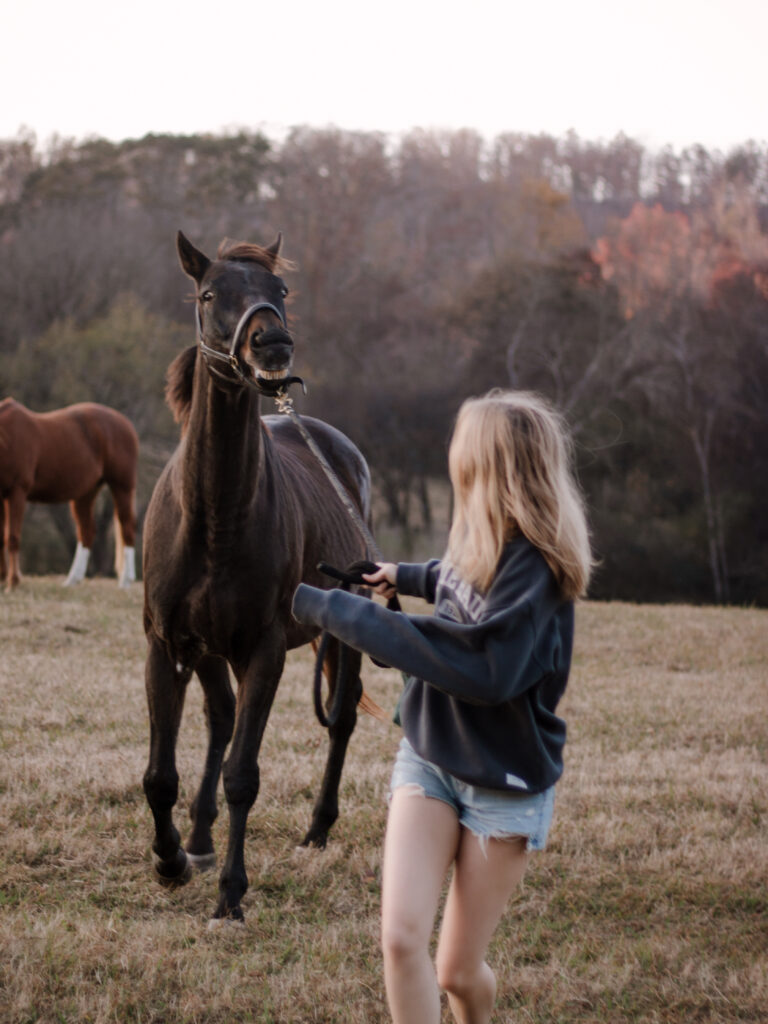
And there you have it!
Riding a fresh horse can be a thrilling experience, but it can also be dangerous if you don’t know how to handle the situation. As an equestrian, it’s important to understand what a fresh horse is, why it happens, and how to handle them safely and effectively.
By following these tips and tricks, you can ensure that you and your horse have a positive and enjoyable ride, free from accidents and mishaps. Remember to always prioritize safety, take your time, and have fun!
What you do when you’re guaranteed some spooks? Leave a comment below!
All the best,
Laura
New here? Get to know me!
Want more? Follow me on Instagram!

